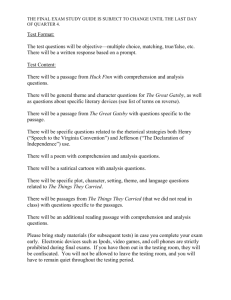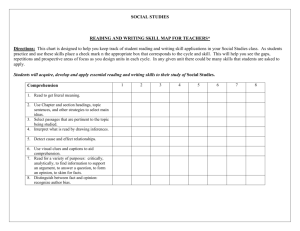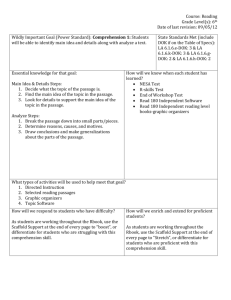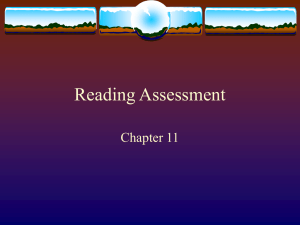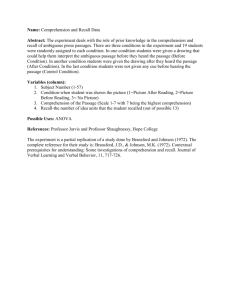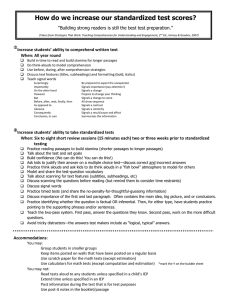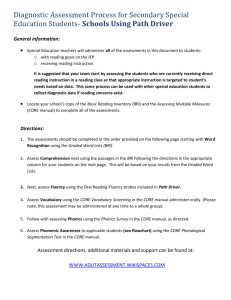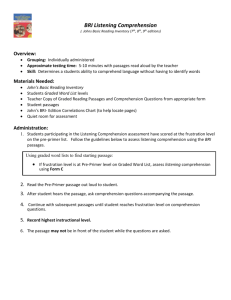Informal Reading Inventory (IRI) Guide
advertisement
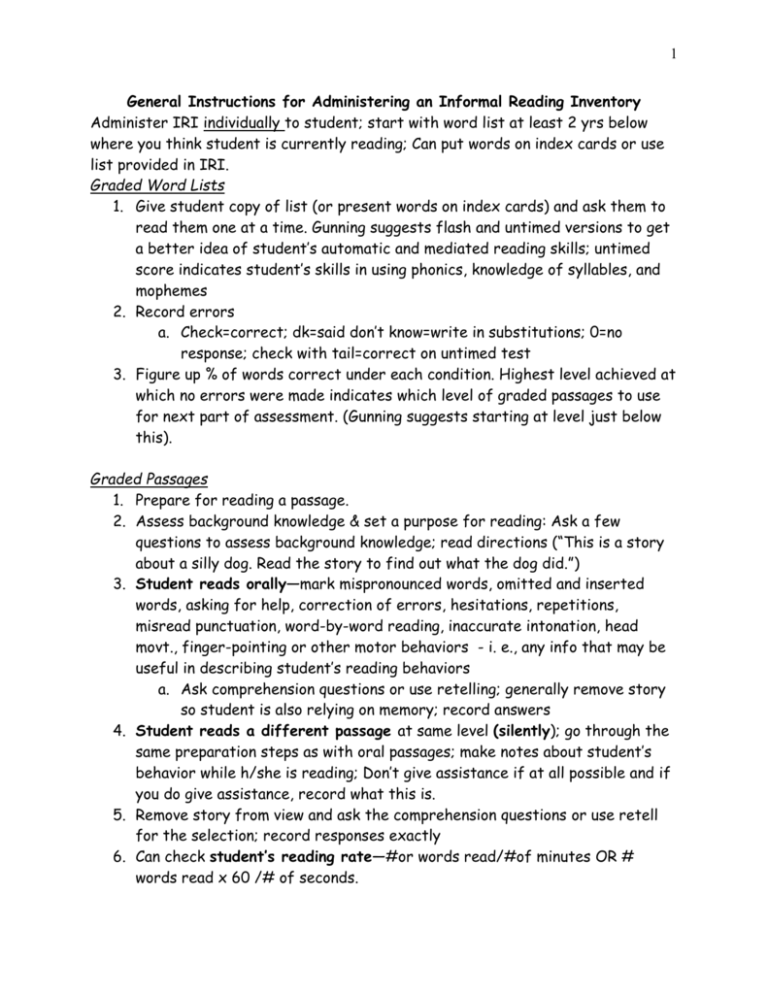
1 General Instructions for Administering an Informal Reading Inventory Administer IRI individually to student; start with word list at least 2 yrs below where you think student is currently reading; Can put words on index cards or use list provided in IRI. Graded Word Lists 1. Give student copy of list (or present words on index cards) and ask them to read them one at a time. Gunning suggests flash and untimed versions to get a better idea of student’s automatic and mediated reading skills; untimed score indicates student’s skills in using phonics, knowledge of syllables, and mophemes 2. Record errors a. Check=correct; dk=said don’t know=write in substitutions; 0=no response; check with tail=correct on untimed test 3. Figure up % of words correct under each condition. Highest level achieved at which no errors were made indicates which level of graded passages to use for next part of assessment. (Gunning suggests starting at level just below this). Graded Passages 1. Prepare for reading a passage. 2. Assess background knowledge & set a purpose for reading: Ask a few questions to assess background knowledge; read directions (“This is a story about a silly dog. Read the story to find out what the dog did.”) 3. Student reads orally—mark mispronounced words, omitted and inserted words, asking for help, correction of errors, hesitations, repetitions, misread punctuation, word-by-word reading, inaccurate intonation, head movt., finger-pointing or other motor behaviors - i. e., any info that may be useful in describing student’s reading behaviors a. Ask comprehension questions or use retelling; generally remove story so student is also relying on memory; record answers 4. Student reads a different passage at same level (silently); go through the same preparation steps as with oral passages; make notes about student’s behavior while h/she is reading; Don’t give assistance if at all possible and if you do give assistance, record what this is. 5. Remove story from view and ask the comprehension questions or use retell for the selection; record responses exactly 6. Can check student’s reading rate—#or words read/#of minutes OR # words read x 60 /# of seconds. 2 7. Stop moving up levels when students word recognition drops below 90% , comprehension drops below 50%, or when student looks frustrated /stressed. Listening Comprehension (rough assessment of receptive language level) Purpose is to try to find highest point at which student can understand 75% of material 1. Beginning with the next level up (from oral/silent reading), teacher reads 1-2 selections from each level to student and asks comprehension questions. Use same sequence of exploring background and setting purpose before reading passage to student. 2. Keep going until student cannot answer comp questions with at least 75% accuracy.

